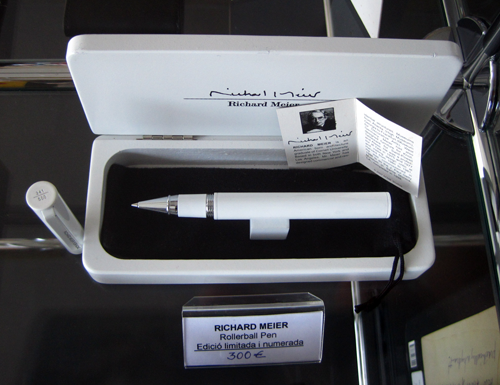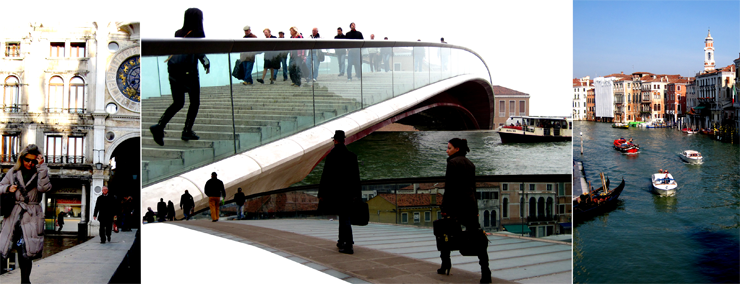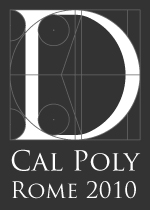Thank you Marc, and thank you Christine Lauren Zach Marcela David Alyssa Katie Ross Joel Ramon Shannon Madeline Marielle Tam Diana Alex David Stephen.
I like you all very much. Thank you for wonderful memories and for being wonderful people. When I see you from now on we will be speaking in as much Italian as we can manage.
You are truly amazing people, and Rome is an amazing place.
Until next time,
Karla 🙂

My time in Rome has given me an important opportunity to unlearn and start from a new place. In short, I can now enjoy designing and thinking about architecture. I feel that architecture is less foreign. Before it was a world of technical terms and computerized drawings that I struggled to connect with. In the past fifteen weeks, I realized that my imagination, my stories, my drawings, and my ideas have more worth for architecture than I thought. I can now allow myself to run around, awestruck, in a place like Sagrada Familia, fascinated with the way a stained glass window casts colored light onto columns, consciously letting architecture affect me.
I’ve fallen down a rabbit’s hole and found a Wonderland where bubble-making orchestras inhabit temples, where cities become amusement parks, where we watch the sunrise everyday, and eat tasty things from the Jewish bakery for breakfast. Architecture is more than technicalities, concepts, and even our experiences. It exists despite us, leaving us to wonder forever.
My new aesthetic: Architecture is to be discovered and enjoyed for what it does (to me, to other people, to the site, to other buildings), not what it looks like or tries to represent formally. As David Leatherbarrow said, “the design of this building was not the definition of forms but the orchestration of relationships” (Landings & Crossings).
 Found at the Barcelona Pavilion Bookstore. I think it only comes in white =)
Found at the Barcelona Pavilion Bookstore. I think it only comes in white =)
 Jardines del Turia, a most pleasant stretch of green through the city
Jardines del Turia, a most pleasant stretch of green through the city
 City of the Arts and Sciences, what it’s like in Santiago Calatrava’s world
City of the Arts and Sciences, what it’s like in Santiago Calatrava’s world
 “Even the benches are cantilevered!”
“Even the benches are cantilevered!”
 Military conquest by the Roman Empire was made possible by their vast network of roads. Roads, though visible on a daily basis, form an invisible network steering and moving inhabitants through the city. The roads I walk on, as well as the openings I find along those paths, have guided my wanderings in Rome. As noted, the journey to a place can often be as meaningful (or more meaningful) than the destination itself. Via Panisperna was opened by Sixtus V, linking S.M. Maggiore with Piazza della Colonna Traiana. In the 19th century, the previously disconnected Termini Station with Piazza Venezia. Via dei Fori Imperiali was constructured in the 1930s, demolishing a medieval area in its path from Piazza Venezia to the Colosseo. Roads determine where we go and what we see along those paths.
Military conquest by the Roman Empire was made possible by their vast network of roads. Roads, though visible on a daily basis, form an invisible network steering and moving inhabitants through the city. The roads I walk on, as well as the openings I find along those paths, have guided my wanderings in Rome. As noted, the journey to a place can often be as meaningful (or more meaningful) than the destination itself. Via Panisperna was opened by Sixtus V, linking S.M. Maggiore with Piazza della Colonna Traiana. In the 19th century, the previously disconnected Termini Station with Piazza Venezia. Via dei Fori Imperiali was constructured in the 1930s, demolishing a medieval area in its path from Piazza Venezia to the Colosseo. Roads determine where we go and what we see along those paths.
I was rereading my study abroad application essay earlier. I wrote about meeting the unknown, taking risks, and developing my imagination. One of my questions was this:
How do I merge what I know with what I can imagine?
I think I am seeing now that my dreaming has more validity than I thought. That the what if’s of my mind could be explored if I gave them a chance instead of discarding them. But there is also more to be said about knowing as much as we could talk about imagining. How do we know something? What do we know about it?
We got a lot of analysis in SLO but now we are getting the experience part of knowing. For this, I am very grateful to be in Rome.

For its forcole magazine bin, suspended staircases, rolling bookshelves, colored glass fill, movable library ladder, spinning kitchen rack, sleeping nook, reflective ceiling, trapezoidal entries, and extraordinary lamps, I’m in love with Studio Pastor.
The conference room lamp contains two light sources. One, a bulb fixed above the table, is connected to a mobile of colored glass pieces from the local glass factory. The other light bulb dangles between a wire and a spiral cord. The straight wire hangs above our heads, pivots at a hook high on the wall, and runs down to a cylindrical handle with three options of height. (When Ross discovered the contraption, The Professor replied, “Bravo!”).
These inventions tell of the story of a man and his ideas, his fascinations. With joyous surprise we swung his desk lamp, walked on the colored steps, and ate little sandwiches. My love for this place is completely dependent on these details. As individual manifestations of whimsical ideas, they come together to create a place that celebrates the joy of design and of making.

When roads change into waterways, they’ll flood you if you sit.
In this land there are boats instead of cars and all curves instead of straight lines. The stones bubble and flood over with water while people squish onto runways to walk around the city. I used to follow roads when I got lost, but, here, roads for vehicles and roads for people cross and veer off in different directions. I try to read signs but they point me in two directions. The houses have two front entrances and no back door. The city can’t grow so instead it wiggles slowly back into the lagoon it emerged from.
Experiencing Venice requires you to throw away your routines and adapt a completely new set of rules and logic. No other city has asked this much of me. When roads have turned to waterways, everything in life changes. How one moves about the city is completely different in Venice than anywhere else in the world.


 This little detail occupied me for at least an hour
This little detail occupied me for at least an hour